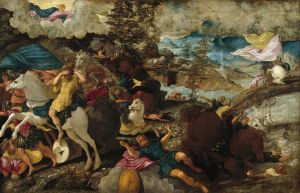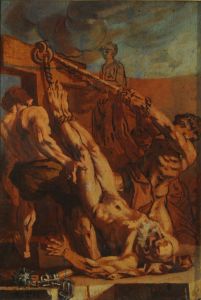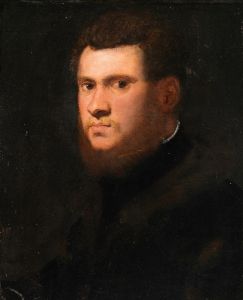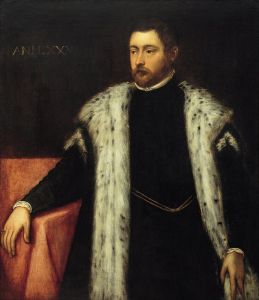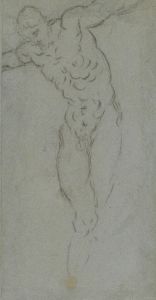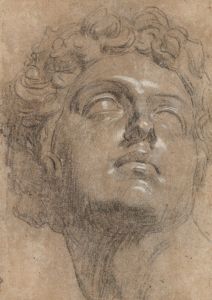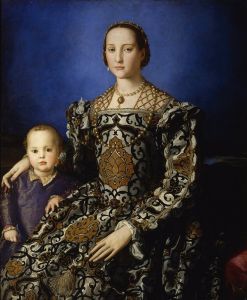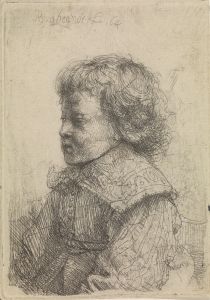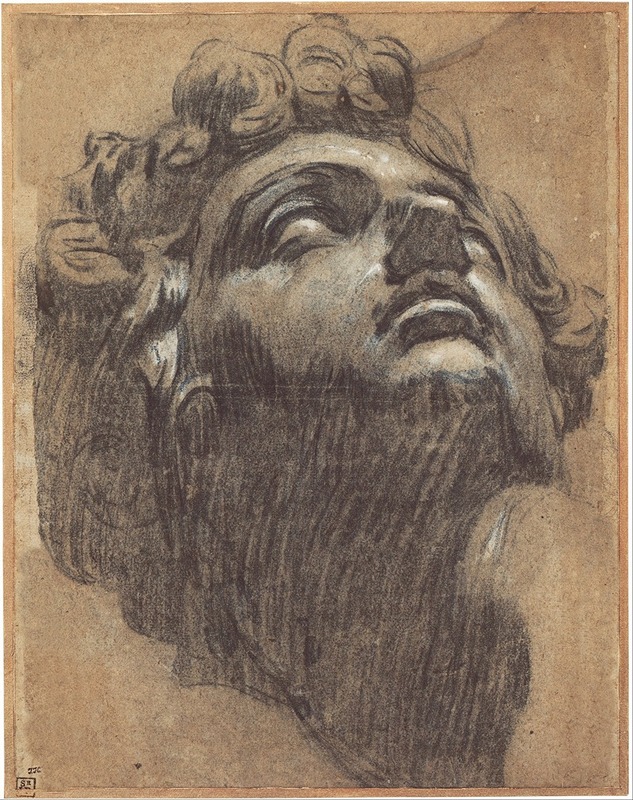
Head of Giuliano de’ Medici
A hand-painted replica of Jacopo Tintoretto’s masterpiece Head of Giuliano de’ Medici, meticulously crafted by professional artists to capture the true essence of the original. Each piece is created with museum-quality canvas and rare mineral pigments, carefully painted by experienced artists with delicate brushstrokes and rich, layered colors to perfectly recreate the texture of the original artwork. Unlike machine-printed reproductions, this hand-painted version brings the painting to life, infused with the artist’s emotions and skill in every stroke. Whether for personal collection or home decoration, it instantly elevates the artistic atmosphere of any space.
Jacopo Tintoretto, an eminent figure of the Venetian Renaissance, is renowned for his dynamic compositions and vigorous brushwork. Among his extensive oeuvre, the "Head of Giuliano de’ Medici" stands out as a significant work, though specific details about this painting are scarce.
Tintoretto, born Jacopo Comin in 1518, was a prolific artist whose career spanned the mid to late 16th century. He was known for his ambitious narrative paintings and his ability to convey intense emotion and movement. His work was characterized by dramatic lighting and bold use of perspective, which were hallmarks of the Mannerist style that followed the High Renaissance.
The subject of this painting, Giuliano de’ Medici, was a member of the illustrious Medici family of Florence, a dynasty that played a crucial role in the political, economic, and cultural life of Italy during the Renaissance. Giuliano was the younger brother of Lorenzo de’ Medici, known as Lorenzo the Magnificent, a major patron of the arts. Giuliano himself was a notable figure, remembered for his patronage of the arts and his tragic assassination in the Pazzi Conspiracy of 1478.
While specific details about the creation of "Head of Giuliano de’ Medici" by Tintoretto are limited, it is likely that the painting was intended to capture the likeness and character of Giuliano, reflecting the Medici's influence and the artist's skill. Tintoretto's portraits are known for their psychological depth and ability to convey the inner life of their subjects, often through expressive facial features and a keen attention to detail.
Tintoretto's technique involved rapid, energetic brushstrokes and a dramatic use of chiaroscuro, which would have been employed to give life to Giuliano's visage. His approach to portraiture was innovative, often breaking away from the static and formal representations common in earlier Renaissance works. Instead, Tintoretto infused his portraits with a sense of immediacy and vitality, qualities that would have been fitting for a figure like Giuliano de’ Medici.
The painting's historical context is also significant. During Tintoretto's lifetime, Venice was a thriving center of commerce and culture, and the Medici family, though based in Florence, had far-reaching influence. The connection between Venice and Florence during the Renaissance was marked by a shared appreciation for art and humanism, which artists like Tintoretto embodied in their work.
Despite the lack of detailed records about this specific painting, Tintoretto's broader body of work provides insight into his artistic intentions and the cultural milieu in which he operated. His portraits, including the "Head of Giuliano de’ Medici," are celebrated for their ability to transcend mere representation, offering viewers a glimpse into the soul of the subject and the era.
In summary, while detailed information about "Head of Giuliano de’ Medici" by Jacopo Tintoretto is limited, the painting can be appreciated within the context of Tintoretto's masterful portraiture and the rich cultural tapestry of the Renaissance. The work reflects the artist's skill in capturing the essence of his subjects and the enduring legacy of the Medici family in the arts.







